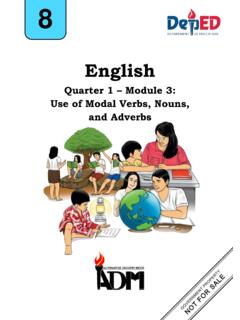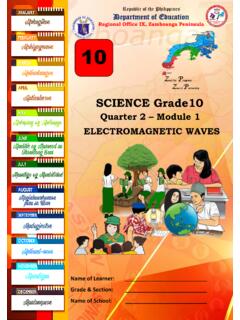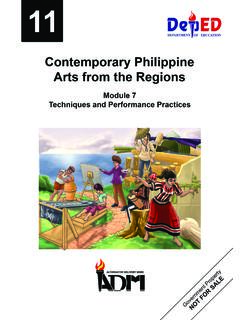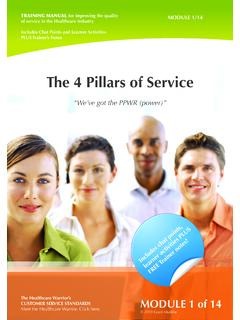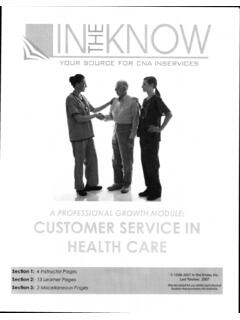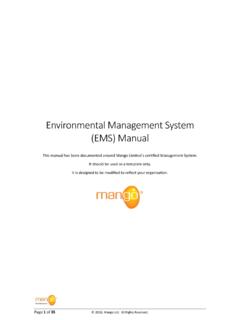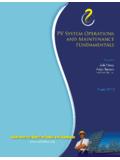Transcription of Oral Communication in Context - ZNNHS
1 oral Communication in Context Quarter 1 module 3: Strategies to Avoid Communication Breakdown ii oral Communication in Context Alternative Delivery Mode Quarter 1 module 3: Strategies to Avoid Communication Breakdown First Edition, 2020 Republic Act 8293, section 176 states that: No copyright shall subsist in any work of the Government of the Philippines. However, prior approval of the government agency or office wherein the work is created shall be necessary for exploitation of such work for profit. Such agency or office may, among other things, impose as a condition the payment of royalties. Borrowed materials ( , songs, stories, poems, pictures, photos, brand names, trademarks, etc.) included in this module are owned by their respective copyright holders. Every effort has been exerted to locate and seek permission to use these materials from their respective copyright owners. The publisher and authors do not represent nor claim ownership over them.
2 Published by the Department of Education Secretary: Leonor Magtolis Briones Undersecretary: Diosdado M. San Antonio Printed in the Philippines by _____ Department of Education RegionIV-A CALABARZON Office Address: Gate 2 Karangalan Village, Barangay San Isidro Cainta, Rizal 1800 Telefax: 02-8682-5773/8684-4914/8647-7487 E-mail Address: Development Team of the module Writer: Jhon Jhon P. Zotomayor; Fely Rose M. Nacario Editors: Marites M. Aguilar; Rizza A. Pereyra Reviewer: Liza L. Banayo; Lea C. Villegas; Leilani J. Miranda; Erma S. Valenzuela; Jhonathan S. Cadavido Illustrator: Joseph O. Ocfemia Layout Artist: Allan E. Medenilla Management Team: Regional Director: Wilfredo E. Cabral CLMD Chief: Job S. Zape Jr. Regional EPS In Charge of LRMS: Eugenio S. Adrao Regional ADM Coordinator: Elaine T. Balaogan Schools Division Superintendent/s: Edna Faura-Agustin; Marites A. Iba ez Assistant Schools Division Superintendent/s: Nicholas M. Burgos; Edgardo B.
3 Militante; CID Chief/s: Mary Ann L. Tatlongmaria; Orlando T. Valverde Division EPS/s In Charge of LRMS: Evelyn P. De Castro; Godofredo C. Mercado iii oral Communication in Context Quarter 1 module 3: Strategies to Avoid Communication Breakdown iv Introductory Message For the facilitator: Welcome to the oral Communication in Context Grade 11/12 Alternative Delivery Mode (ADM) module on Strategies to Avoid Communication Breakdown! This module was collaboratively designed, developed and reviewed by educators both from public and private institutions to assist you, the teacher or facilitator in helping the learners meet the standards set by the K to 12 Curriculum while overcoming their personal, social, and economic constraints in schooling. This learning resource hopes to engage the learners into guided and independent learning activities at their own pace and time. Furthermore, this also aims to help learners acquire the needed 21st century skills while taking into consideration their needs and circumstances.
4 In addition to the material in the main text, you will also see this box in the body of the module : As a facilitator, you are expected to orient the learners on how to use this module . You also need to keep track of the learners' progress while allowing them to manage their own learning. Furthermore, you are expected to encourage and assist the learners as they do the tasks included in the module . Notes to the Teacher This contains helpful tips or strategies that will help you in guiding the learners. v For the learner: Welcome to the oral Communication in Context Grade 11/12 Alternative Delivery Mode (ADM) module on Strategies to Avoid Communication Breakdown! The hand is one of the most symbolized part of the human body. It is often used to depict skill, action and purpose. Through our hands, we may learn, create and accomplish. Hence, the hand in this learning resource signifies that you as a learner are capable and empowered to successfully achieve the relevant competencies and skills at your own pace and time.
5 Your academic success lies in your own hands! This module was designed to provide you with fun and meaningful opportunities for guided and independent learning at your own leap and speed. You will be enabled to process the contents of the learning resource while being an active learner. This module has the following parts and corresponding icons: What I Need to Know This will give you an idea of the skills or competencies you are expected to learn in the module . What I Know This part includes an activity that aims to check what you already know about the lesson to take. If you get all the answers correct (100%), you may decide to skip this module . What s In This is a brief drill or review to help you link the current lesson with the previous one. What s New In this portion, the new lesson will be introduced to you in various ways such as a story, a song, a poem, a problem opener, an activity or a situation.
6 What is It This section provides a brief discussion of the lesson. This aims to help you discover and understand new concepts and skills. What s More This comprises activities for independent practice to solidify your understanding and skills of the topic. You may check the answers to the exercises using the Answer Key at the end of the module . What I Have Learned This includes questions or blank sentence/paragraph to be filled in to process what you learned from the lesson. What I Can Do This section provides an activity which will help you transfer your new knowledge or skill into real life situations or concerns. Assessment This is a task which aims to evaluate your level of mastery in achieving the learning competency. vi Additional Activities In this portion, another activity will be given to you to enrich your knowledge or skill of the lesson learned. This also tends retention of learned concepts.
7 Answer Key This contains answers to all activities in the module . At the end of this module you will also find: The following are some reminders in using this module : 1. Use the module with care. Do not put unnecessary mark/s on any part of the module . Use a separate sheet of paper in answering the exercises. 2. Do not forget to answer What I Know before moving on to the other activities included in the module . 3. Read the directions carefully before doing each task. 4. Observe honesty and integrity in doing the tasks and checking your answers. 5. Finish the task at hand before proceeding to the next. 6. Return this module to your teacher/facilitator once you are through with it. If you encounter any difficulty in answering the tasks in this module , do not hesitate to consult your teacher or facilitator. Always bear in mind that you are not alone. We hope that through this material, you will experience meaningful learning and gain deep understanding of the relevant competencies.
8 You can do it! References This is a list of all sources used in developing this module . 1 This module was designed and written with you in mind. It is here to help you identify various strategies that could be used in order to avoid Communication breakdown. It will lead you to understanding how Communication works among people to foster mutual understanding and good relationship. The scope of this module permits it to be used in many different learning situations. The language used recognizes the diverse vocabulary level of students. The lessons are arranged to follow the standard sequence of the course. But the order in which you read them can be changed to correspond with the textbook you are now using. This module is divided into two lessons, namely: Lesson 1: Communication Breakdown Lesson 2: Various Strategies to Avoid Communication Breakdown After going through this module , you are expected to: 1. define the concept of Communication breakdown; 2.
9 Identify the different kinds of barriers to effective Communication ; 3. explain the causes of Communication breakdown; and 4. use appropriate strategies to avoid Communication breakdown and achieve the goals of relationship and community building. A. Choose the letter of the best answer. Write your answers on a separate sheet of paper. 1. It happens when the sender fails to communicate his/her message properly or when the intended message is not clearly understood by the receiver. A. Communication B. Communication barrier C. strategies to avoid Communication barriers D. process of Communication 2. It refers to the natural or environmental conditions that hinder a successful Communication transaction. A. cultural barrier B. external noise C. physical barrier D. psychological barrier What I Need to Know What I Know 2 3. These are issues like trauma, lack of confidence, fear, anger, frustration, and depression that may affect the Communication process.
10 A. external Noise B. linguistic barrier C. psychological barrier D. semantic Noise 4. It refers to the way a person responds in a Communication situation affected by personal norms and traditions. A. cultural barrier B. linguistic barrier C. physical barrier D. psychological barrier 5. This is an example when linguistic barrier to Communication becomes evident. A. A professor explains his lessons eloquently in class. B. Elena is afraid to deliver her opening remarks. C. People do not understand each other s language. D. The transmitter disrupted the speech of Ms. Speaker. 6. This is one of the reasons why cultural diversity can make Communication inefficient. A. Cultural diversity allows people to be unique and original. B. Different culture interpret words, gestures, and symbols differently. C. Traditions propagate through the preservation of norms and values. D. Values of people reflect 7. It is the main cause of semantic noise. A. jeepneys beeping B.

